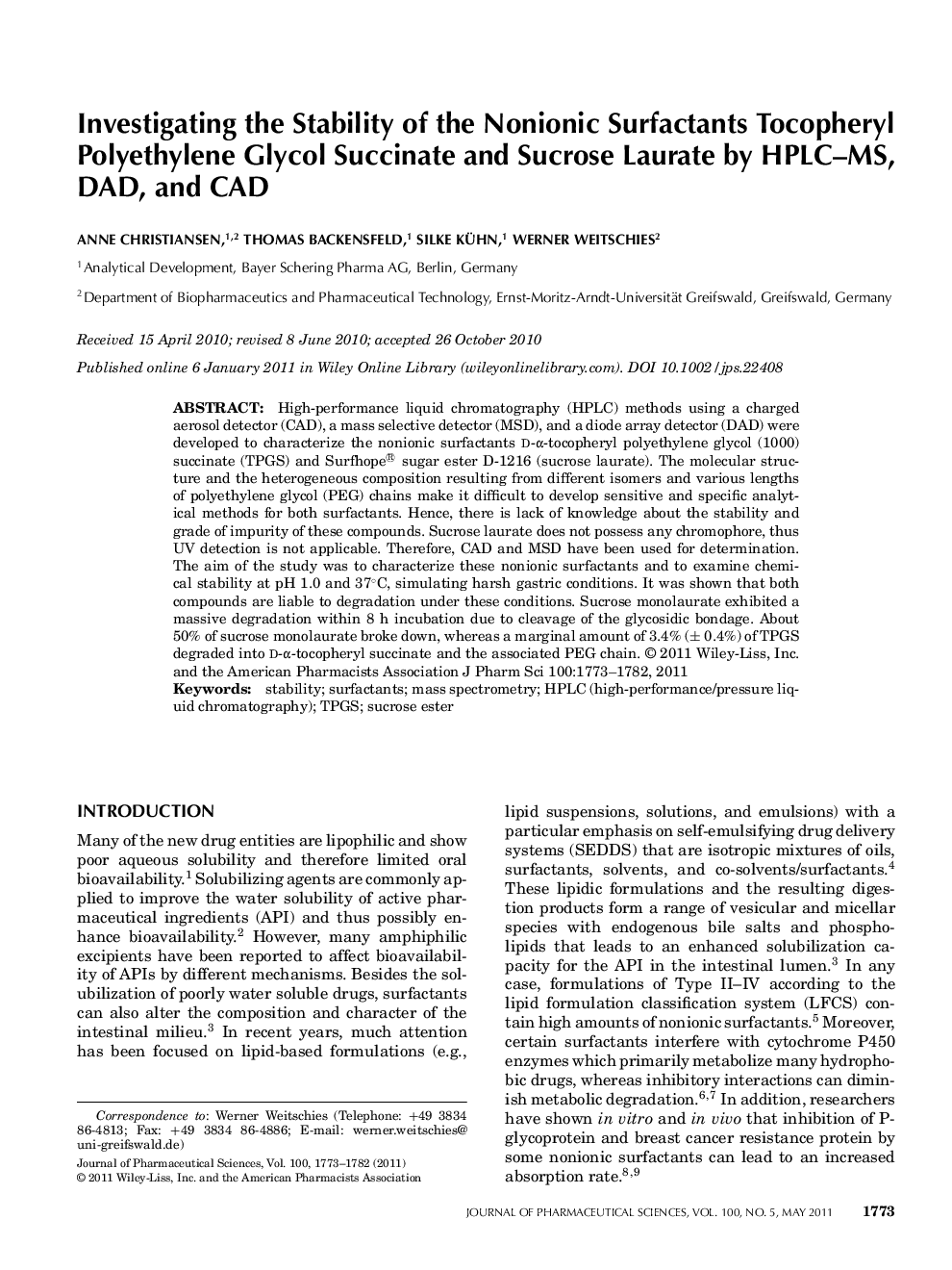| Article ID | Journal | Published Year | Pages | File Type |
|---|---|---|---|---|
| 2485609 | Journal of Pharmaceutical Sciences | 2011 | 10 Pages |
Abstract
High-performance liquid chromatography (HPLC) methods using a charged aerosol detector (CAD), a mass selective detector (MSD), and a diode array detector (DAD) were developed to characterize the nonionic surfactants d-α-tocopheryl polyethylene glycol (1000) succinate (TPGS) and Surfhope® sugar ester D-1216 (sucrose laurate). The molecular structure and the heterogeneous composition resulting from different isomers and various lengths of polyethylene glycol (PEG) chains make it difficult to develop sensitive and specific analytical methods for both surfactants. Hence, there is lack of knowledge about the stability and grade of impurity of these compounds. Sucrose laurate does not possess any chromophore, thus UV detection is not applicable. Therefore, CAD and MSD have been used for determination. The aim of the study was to characterize these nonionic surfactants and to examine chemical stability at pH 1.0 and 37°C, simulating harsh gastric conditions. It was shown that both compounds are liable to degradation under these conditions. Sucrose monolaurate exhibited a massive degradation within 8 h incubation due to cleavage of the glycosidic bondage. About 50% of sucrose monolaurate broke down, whereas a marginal amount of 3.4% (± 0.4%) of TPGS degraded into d-α-tocopheryl succinate and the associated PEG chain.
Keywords
Related Topics
Health Sciences
Pharmacology, Toxicology and Pharmaceutical Science
Drug Discovery
Authors
Anne Christiansen, Thomas Backensfeld, Silke Kühn, Werner Weitschies,
